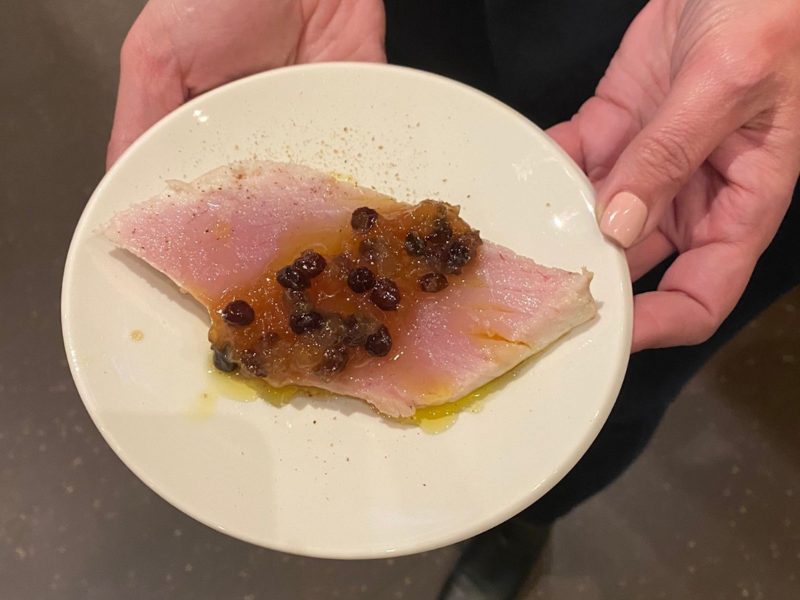Chat with a chef: ‘Keep it simple’ when cooking tuna, says Stephen Hodges
Chef Stephen Hodges calls himself “part chef, part fish”. Over his 43-year chef career, he has run and established some of the most influential seafood restaurants including The Pier and Fish Face. Tuna Australia caught up with Stephen to learn about his passion and commitment to all things seafood and his tips for buying and cooking tuna and swordfish.
Your grandfather was a fisherman. What do you remember about his work?
The first thing that comes to mind is a lot of overcooked seafood every weekend, as my siblings and I stayed with grandparents on weekends as our parents worked in hospitality. But I also remember lots of great stories from my granddad and some of his clumsy attempts to try and teach me to fish. Unlike my own son, I had no interest in fishing as an eight-year-old.
Why did you become a chef? How did your journey start?
My parents ran hotels, and we lived in hotels. Remembering back to the early seventies, hotels had it all—from cafes, bistro/taverns, fine dining, and functions. In my teenage years, I worked as a dishwasher. I loved it—the excitement, the naughtiness of the chefs and the camaraderie. It felt like family. My parents wanted me to manage hotels, but my heart was set on cooking.
You've run some influential fish restaurants and cafes, including The Pier at Rose Bay and Fish Face at Darlinghurst. What do you love about working with and serving up seafood?
In 1990, my best friend then business partner and mentor Greg Doyle and I were approached by a leading company to consult on a new seafood restaurant (The Pier at Rose Bay). Until then, seafood was not on my radar. So, my intent turned to how can I cook fish I would eat. After an introduction from Neil Perry and John Susman to wild export seafood, and the love and sheer passion of the fishing crew, I realised that I could cook this amazing product a little less. This became my obsession—learning cooking techniques for seafood, and how to fillet, cut and store premium seafood.

BBQ albacore tuna with sauce agrodolce.
You're committed to excellence in seafood. Why is it important to use sustainable seafood, including tuna and swordfish?
Sustainability was a bit of a confused word back then, but we were blessed with using export wild seafood that was a product always handled with extra care and the fishery was looked after. Aquaculture was still in the early stages except for rainbow trout. Tuna was seasonal and we only got farmed salmon during three months of the year. Kingfish farming was just starting, and prawn farming was in its infancy. It was an amazing time of learning and experiencing Australian seafood at its best. Tuna and swordfish were in abundance and to be able to experience both raw and cooked was an awakening.
You're passionate about mentoring chefs. What lessons or tips do you share with them?
I concentrate more on how I cook the fish than what I serve with it. Cooking fish on point is the true way to taste how amazing fish protein is.
As far as what to put with fish, keep it simple.
You actively encourage consumers to cook and eat more seafood. What tips/advice would you give them?
Don't be scared of seafood—it really is the easiest protein to cook. Fresh fish doesn't smell, and undercooked fish won’t make you sick. Try and cook your fish less—the experience will surprise you.
What's your favourite tuna or swordfish dish?
I'm on a mission lately to show people how to cook and consume albacore tuna. It upsets me that it is sold in retail without instructions on how to cook it. So, I'm going to say my favourite tuna dish is BBQ albacore tuna with sauce agrodolce (cooked rare). Albacore tuna is one of our most sustainable cheapest tunas, so there’s no reason we can’t eat it two or three times a week. Try it raw with eschalots, parsley, chilli and raw egg yolk.
Try Stephen's recipe for BBQ albacore tuna with sauce agrodolce.